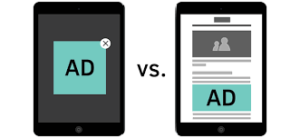Native advertising is all grown up and here to stay. It’s overtaken display to become the largest category of advertising. These points and more are takeaways from the Sharethrough annual NATIVE Summit in San Francisco in July.
Read more here.

Weekly stories curated exclusively for digital tourism marketers
Native advertising is all grown up and here to stay. It’s overtaken display to become the largest category of advertising. These points and more are takeaways from the Sharethrough annual NATIVE Summit in San Francisco in July.
Read more here.

Facebook grabbed a lot of headlines last week, making another fundamental change to the algorithms that prioritize and serve up its News Feed. Something else happened; something that received very little attention.
“But for the increasing number of publishers that rely on native advertising to make ends meet, Facebook may have already delivered a brutal blow,” writes The Content Strategist.
Facebook is shaking up the native ad model by requiring publishers and influencers to tag all branded content. Read more about the implications here.
Lord & Taylor fashion store chain paid 50 Instagramers between $1,000 and $4,000 each to wear certain dresses without disclosing the fact. Uh-oh.
What exactly is an influencer and when exactly must a paid relationship be divulged is at the heart of the latest FTC interpretation.
Here’s a side-by-side comparison (from the chair of the PR Council and global chair of Ogilvy Public Relations ) of what earned influence is… and isn’t:
Is: Is Not:
Attraction Coercion
Mutual interest Inducements
Freely-chosen Bullying
Honest & respectful Manipulative
Intrinsic Extrinsic
Demands credibility & competence Cynical exploitation
Long-term, sustaining Fleeting
>>> Best idea is to read up on the matter, seen in more detail here.